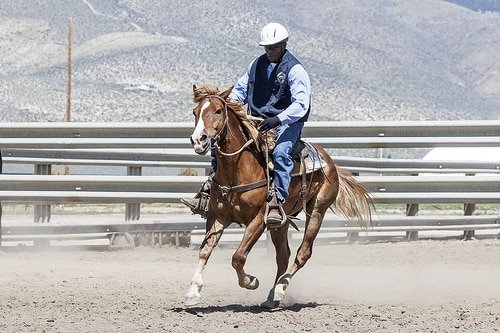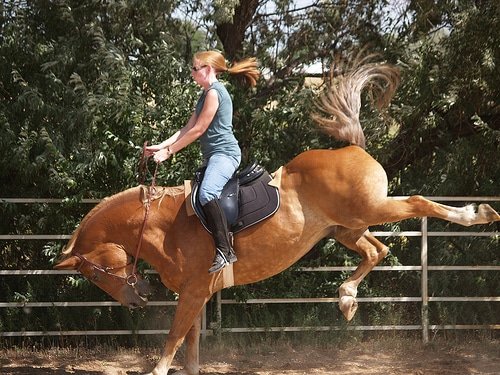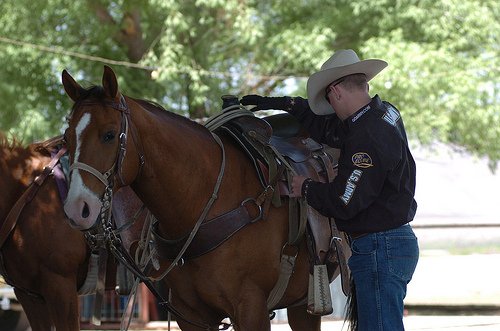
We’ve talked several times now about the importance of consistency. Horses are creatures of habit. This is why we use set cues to ask for certain behaviors. This may seem simple enough at first glance, but, like most things, it is a bit more complicated than it first appears. Horses don’t like to be put on the spot. This need a little warning that the cue is coming. So, rather than simply putting them on the spot and inducing a refusal due to stage fright, you should implement a sequence of cues.
How to Sequence Cues
Step 1: Identify the Correct Response
First, you need to identify the exact behavior you are looking for. This may seem self explanatory, but it is important that you establish the exact response you want from your horse. If you do not have clear expectations set for what you would like the horse to do, you will not be prepared to reward the horse the moment he gets it exactly right.
Step 2: Break Down the Approach
Break every maneuver down into a sequence of steps for both the horse and the rider. Start with what the horse needs to do as this will define what the rider needs to do. Make sure you account for every stride, even the tiniest detail. The more detailed you are, the better you will be able to set your horse up for success.
Step 3: Practice Each Piece Separately
It is important that you are able to perform each piece separately before trying to put them all together. If you cannot perform the pieces individually, you will never be able to perform them once you put them all together.
Step 4: Put It All Together
Once you have mastered each piece separately, it is time to string them all together. There needs to still be a clear sequence to the cues as you perform each piece as part of the whole. It is ok to take it slowly at first. Doing it right is always better than doing it fast.
Example
In this example, we will look at a left lead departure. It is recommended that you start this at the trot as opposed to the walk. Lead departures are easier if you have more momentum, but that, of course, will depend on the horse and rider. So know that this can be done from the trot or the walk depending on your preference.
Step 1: Identify the Correct Response
For a left lead departure we want the hip to move slightly to the left and for the left shoulder to lift and swing forward, stepping off into the left lead. The horse should keep his hindquarters under him and keep his front end elevated.
Step 2: Break Down the Approach
First the horse need to have an even tempo in the trot. He should be moving in a straight line, staying between the reins and maintaining speed and direction without micromanaging from the rider. Once an even tempo and a straight line have been established he needs to move his hip slightly to the left. Then, he needs to step off into the left lead.
You need to maintain an even tempo if posting. Posting adds energy and momentum to the trot. You should reach back with their right leg just slightly to tip the horse’s hip to the left. It is often helpful to tip the horse’s nose to the left just slightly as well. The nose should only be tip just enough so that you can see the corner of the horse’s eye, but no further. Cluck, sit, and ride the canter, even if the horse hasn’t quite caught up with you yet. He will catch up in a stride or two because he doesn’t want you bouncing on his back.
Step 3: Practice Each Piece Separately
Practice pushing his hip over, tipping his nose, and maintaining speed, direction, and tempo at the trot while moving in a straight line. All of these are vital components of the lead departure.
Step 4: Put It All Together
Implement the plan from step 2. If you do it correctly, you will have opened the door for him to do the right thing. All he has to do is walk through it (metaphorically speaking). At least 95% of the time, it is the rider who has a problem with the lead departure, not the horse. Fix the rider’s communication errors and the horse magically gains the ability to execute a beautiful lead departure.
Cover Photo by BLM Nevada









